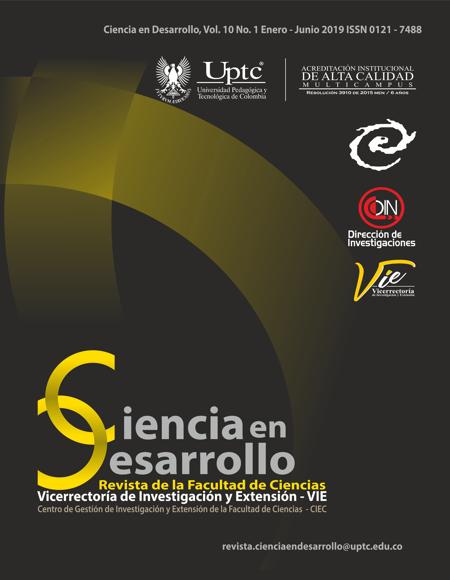Statistical model of the distribution of matter of protoplanetary disks

Abstract
In the majority of models, the protoplanetary disks have a continuous distribution of gas and dust, with a dynamics that gives origin to the planets, which in the process of formation, make grooves on the disk by gravitationally capturing the existing matter around them. Transition disks are a class of protoplanetary disk that has a large cavity free of gas and dust inside. In this paper a statistical model based on transitional discs is proposed, which extends to protoplanetary disks. With this model you can perform dynamic simulations of planetary formation using few parameters. The process followed to simulate the transition disk DoAr44 and the protoplanetary disk Hl-Tauri is shown. Unlike other models, the formation of planetary bodies is faster.
Keywords
Discos de transición, disco protoplanetario, simulación de discos protoplanetarios.
References
[1] ALMA Partnership, et al, “The 2014 ALMA Long Base- line Campaign: First Results from High Angu- lar Resolution Observations toward the HL Tau Region,” ApJl, vol. 808, p. L3, July 2015.
[2] C. Carrasco-González, T. Henning, C. J. Chan- dler, H. Linz, L. Pérez, L. F. Rodríguez, R. Galván-Madrid, G. Anglada, T. Birnstiel, R. van Boekel, M. Flock, H. Klahr, E. Macias, K. Menten, M. Osorio, L. Testi, J. M. Torrelles, and Z. Zhu, “The VLA View of the HL Tau Disk: Disk Mass, Grain Evolution, and Early Planet Formation,” ApJl, vol. 821, p. L16, Apr. 2016.
[3] S.M.Andrews,D.J.Wilner,C.Espaillat,A.M. Hughes, C. P. Dullemond, M. K. McClure, C. Qi, and J. M. Brown, “Resolved Images of Large Cavities in Protoplanetary Transition Disks,” ApJl, vol. 732, p. 42, May 2011.
[4] S. Bruderer, “Survival of molecular gas in cav- ities of transition disks. I. CO,” A&A, vol. 559, p. A46, Nov. 2013.
[5] S. Marino, S. Perez, and S. Casassus, “Shad- ows Cast by a Warp in the HD 142527 Proto- planetary Disk,” ApJl, vol. 798, p. L44, Jan. 2015.
[6] S. Bruderer, N. van der Marel, E. F. van Dishoeck, and T. A. van Kempen, “Gas struc- ture inside dust cavities of transition disks:Ophiuchus IRS 48 observed by ALMA,” A&A, vol. 562, p. A26, Feb. 2014.
[7] N. van der Marel, E. F. van Dishoeck, S. Brud- erer, S. M. Andrews, K. M. Pontoppidan, G. J. Herczeg, T. van Kempen, and A. Miotello, “Resolved gas cavities in transitional disks inferred from CO isotopologs with ALMA,” A&A, vol. 585, p. A58, Jan. 2016.
[8] M. M. Nieto, “Conclusions about the titius bode law of planetary distances,” A&A, vol. 8, p. 105, Sept. 1970.
[9] A. E. Caswell, A Relation between the Mean Distances of the Planets from the Sun, vol. 69. American Association for the Advancement of Science, Apr. 1929.
[10] C. Pinte, W. R. F. Dent, F. Ménard, A. Hales, T. Hill, P. Cortes, and I. de Gregorio-Monsalvo, “Dust and Gas in the Disk of HL Tauri: Surface Density, Dust Settling, and Dust-to-gas Ratio,”ApJ, vol. 816, p. 25, Jan. 2016.
[11] H.-W. Yen, H. B. Liu, P.-G. Gu, N. Hirano, C.- F. Lee, E. Puspitaningrum, and S. Takakuwa, “Gas Gaps in the Protoplanetary Disk around the Young Protostar HL Tau,” ApJl, vol. 820, p. L25, Apr. 2016.
[12] N. Buitrago, N. Poveda, and N. Vera- Villamizar, “Distribution of mass of the proto- planetary disk HL Tau,” TECCIENCIA, vol. 11, no. 20, pp. 67–70, 2016.